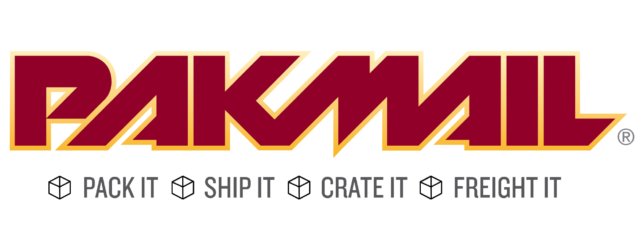Navigating freight shipping documentation can be tricky for small businesses. Getting it right is crucial to ensuring goods arrive in one piece and on time. Missing forms, incorrect details, or poor organization can lead to delays, added costs, or even lost shipments. These challenges can feel overwhelming, especially for a small team juggling multiple tasks. It’s important to streamline this process for smooth operations and customer satisfaction.
Small businesses in Colorado Springs often face unique challenges when it comes to freight shipping. Changes in local regulations, weather conditions affecting transport, and the need to compete in a wider marketplace add complexity to logistics. Effective documentation becomes not just a necessity but a competitive edge, helping small businesses manage these hurdles. By focusing on correct and comprehensive documentation, businesses alleviate logistical headaches and ensure their products reach customers safely and promptly.
Identifying Common Documentation Issues
Understanding how documentation goes awry is key to resolving freight shipping problems. Here are some typical errors that small businesses need to watch out for:
– Incorrect Forms: Selecting the wrong paperwork, which fails to meet shipping requirements.
– Missing Information: Omitting key details such as product descriptions or contact info, which can delay processing.
– Poor Labeling: Label errors that lead to misdelivery or loss.
– Inconsistent Records: Allowing discrepancies between shipping documents and invoices, causing confusion.
Consequences of these problems can be frustrating and costly. A shipment flagged for incorrect documentation may face significant delays, interrupting the supply chain and affecting customer satisfaction. In places like Colorado Springs, where local conditions can already affect shipping schedules, it’s crucial to get these details right. Ensuring all forms are completed accurately and consistently helps maintain smooth operations and build customer trust. By understanding and addressing these common documentation mistakes, small businesses can streamline their freight shipping processes, reducing delays and enhancing reliability.
Step-by-Step Guide to Proper Freight Documentation
Completing freight documentation involves several specific steps. To simplify the process, it’s useful to know exactly what documents are required and how to fill them out correctly. Here is a clear guide to help you navigate through it:
1. Bill of Lading (BOL): This is the most important document. It acts as a receipt, a contract, and a document of title. When filling it out, ensure that all sender and receiver details are correct, including addresses and contact numbers.
2. Commercial Invoice: This document details the goods being shipped and is used for customs declarations. List the shipped items, their value, and the total charges. Make sure to include any applicable taxes or fees.
3. Packing List: This should match the commercial invoice. It provides item descriptions, the number of boxes, weights, and measurements. Label boxes for easy identification during transit.
4. Certificate of Origin: Required for certain international shipments, this document verifies where the goods were manufactured. Check with local authorities to determine if this is necessary for your freight.
5. Export Declaration: For international shipments, this declares the nature of the goods. Accuracy is critical to avoid complications with customs.
By carefully preparing these documents, you can minimize shipping hiccups. Ensure all information is consistent across forms to avoid confusion or delays.
Tips for Streamlining Freight Documentation for Small Businesses
Streamlined documentation processes prevent headaches. Here are some practical tips for keeping your freight documents organized and efficient:
– Use Templates: Create reusable templates for frequently shipped items. This cuts down on repetitive tasks and helps maintain consistency.
– Digitize Records: Store documentation electronically for easy access and searchability. Digital records reduce the risk of loss or damage compared to physical files.
– Set Reminders: Use calendar reminders for shipment deadlines and follow-ups to ensure no details slip through the cracks.
– Leverage Software Tools: Consider using specialized freight shipping software. These tools can automate document creation, track shipments, and update you on changes in regulations.
Implementing these strategies can improve accuracy and reduce the time spent on paperwork, allowing your team to focus on other priorities.
Ensuring Compliance with Freight Shipping Regulations
Adhering to regulations is crucial when shipping freight, both locally and internationally. In Colorado Springs, staying updated with local regulations is vital to ensure compliance and avoid unnecessary fines.
Familiarize yourself with both national and international shipping rules. Each country or region may have specific documents, labeling needs, or restrictions on certain goods. The key is ongoing education and awareness. Here are some ways to stay current:
– Subscribe to Regulatory Updates: Many agencies offer email alerts or newsletters regarding shipping laws and regulations.
– Attend Workshops: Engage in local business workshops or webinars focused on logistics and shipping.
– Consult Experts: Partner with logistics professionals who understand the intricacies of freight shipping. They can offer insights into complex compliance issues and help navigate any changes efficiently.
Keeping abreast of regulatory requirements ensures your shipping process remains seamless, minimizing costly delays and enhancing your business’s reliability.
Simplifying Your Freight Shipping Process
Freight shipping doesn’t have to be overwhelming. By streamlining documentation and staying ahead with compliance, small businesses in Colorado Springs can enhance their shipping operations. Proper paperwork and keeping up with regulations are key to avoiding delays and ensuring products get where they need to go without unnecessary trouble.
As we’ve seen, tackling common documentation errors, crafting clear steps for preparing documents, and adopting smart organizational tips can make a significant difference. These strategies allow businesses to focus on growth and customer satisfaction, knowing their shipping is in good hands. By investing time in proper documentation practices, you can cultivate a smoother freight shipping process that supports and enhances your business operations.
Get your freight operations running smoothly and efficiently. If you’re looking to simplify and enhance your shipping processes, explore our services for freight shipping in Colorado Springs. Pak Mail is here to support your business every step of the way.

